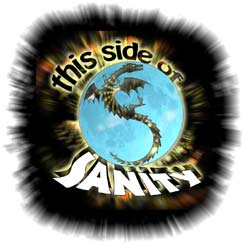
Basics of Sound
Musical Theory and Technique
This Side of Sanity
This chapter discusses the basics of sound.
Sound is a vibratory disturbance in the pressure and density of a fluid or a gas or in the elastic strain in a solid.
Periodic variations in atmospheric pressure are called sound-pressure waves.
Hearing is when sound-pressure waves in the approximate range between 17 and 20,000 cycles per second are detected by the ear.
Music is the art of organizing tones to produce a coherent sequence of sounds intended to elicit an aesthetic response in a listener.
Frequency is the rate of periodic change in sound pressure. Frequency is measured in cycles per second, called Hertz (Hz). Human hearing ranges from approximately 17 Hz to approximately 22,000 Hz.
Intensity or amplitude is the strength of the fluctuations in sound pressure. Sound intensity is measured in decibels (dB). The lowest amplitude sound a human can hear is around 0dB (in quiet settings at 1 KHz to 4 KHz when heard by youth with excellent hearing). This is called the threshold of hearing. Most conversations are around 70 dB. At around 120 dB to 140dB sound is so loud as to hurt the ears. This is called the threshold of pain.
Onset is the time when sound begins.
Duration is the length of time that a sound can be heard. Duration is nomrally measured in seconds. Musicians often measure relative duration (relative to the beat) in notes, rests, and measures (or bars).
Envelope is the pattern of changes in intensity or amplitude of a sound. Envelope is normally divided into attack, release, sustain, and decay, often abbreviated as ARSD.
Wave shape is the graphic representation of the waveform of a sound over time.




.gif)








